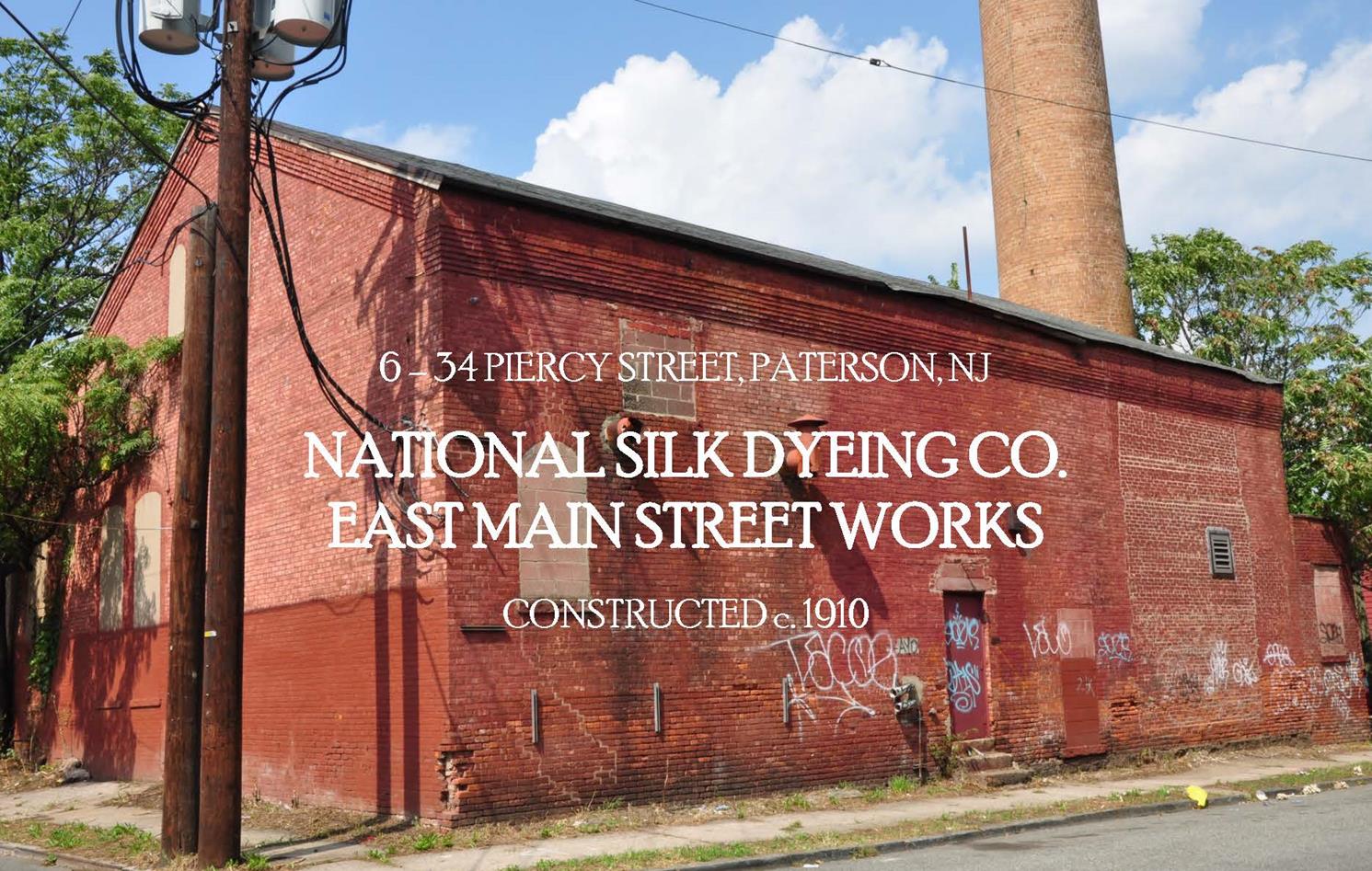
History
The National Silk Dyeing Company's East Main Street Works was built in the years immediately after the formation of the merger that led to the incorporation of the company in 1908. National was formed under the leadership of Charles I. Auger, a leader of the silk dye industry in Paterson and partner in the Auger & Simon Silk Dyeing Company at 5th and Branch Streets. Auger, and several other owners, had resisted the attempt a few years earlier by financiers to purchase a number of Paterson dye works and form a conglomeration that would reduce competition and owner-operator independence. Wishing to sustain these dye works under the control of men who were trained dyers and had built up their businesses over the past several decades, Auger provided the leadership under which were merged his company as well as four other Paterson companies (Emil Geering Silk Dyeing Co., Knipscher & Maas Silk Dyeing Company, Kearns Brothers, and Gaede Silky Dyeing Co.) and a fifth company from Allentown, Pa. (Lotte Brothers). National Silk Dyeing immediately became one of the large silk dyeing conglomerates in the nation, perhaps only second in size to the Weidmann Silk Dyeing Company of Paterson, which that same year had been sold to an international conglomerate owned by Gillet et fils of Lyons, France.
National Silk Dyeing did not close down or merge the operations of its plants, but continued to operate them as semi-independent works each with their own plant management sharing a common corporate structure with its headquarters office at 5 Colt Street in downtown Paterson. The Paterson plants affiliated with National Silk Dyeing appear to have been developed over time to carry out various specializations, so as not to directly compete with another, and to give the company flexibility to adapt its operations to market conditions.
The East Main Street Works, which evolved from the Gaede Silk Dyeing Company, was more than doubled in size between 1908 and 1915. The new construction took place on the west side of East Main Street opposite the original plant, which was located on a triangular-shaped lot adjacent to the Passaic River. The plant expansion included a steam plant with air compressors and the construction of a weighting department. Work at this plant was largely devoted to the dyeing, finishing and printing of ribbons. After about 1925, the East Main Street Works also housed the National Silk Dyeing Company's main lab in a new reinforced-concrete frame building at the southeast corner of Holsman and Piercy Streets. This lab was the central research and experimental laboratory under the direction of Dr. Paul Massini, a Swiss-trained chemist. The main lab was located on the 4th floor of the building with finishing operations located on the lower floors.
The National Silk Dyeing Company became financially distressed during the Great Depression and much of its property was broken up and sold. The section of the East Main Street Works on the west side of East Main Street eventually came into the hands of owner Charles B. Johnson, who in 1950 was leasing the works to Hendo.
References
Hyde, E. B. Atlas of Passaic County, New Jersey, 1877.
Robinson, E. Atlas of the City of Paterson, New Jersey, 1884.
Robinson, E. Atlas of the City of Paterson and Haledon, New Jersey, 1899.
Mueller, A. H. Atlas of the City of Paterson, New Jersey, 1915.
Sanborn Map Company Insurance Maps of Paterson, New Jersey, 1915.
Sanborn Map
Company Insurance Maps of Paterson, New
Jersey, 1931.
Heusser, Albert H. History of the Silk Dyeing Industry in the United States, 1927.